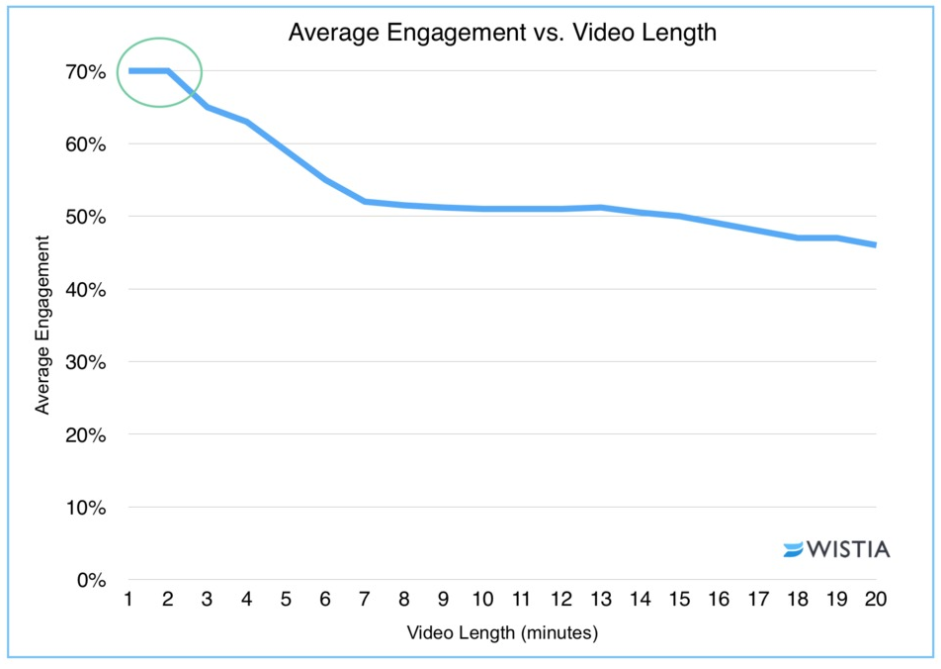Videos are an excellent way to share a message or tell a story that would be difficult to capture in a typical article or blog. If you’re creating videos for your clients, consider sharing it beyond your company’s website. Take it to the next level by posting the video across all social media platforms. Social networks like Facebook, Instagram and Twitter all have their own video features, and videos appeal to a wide demographic of consumers, including millennials.
Most of our clients create videos with their website in mind. But if you’ve gone to the trouble (not to mention expense), we encourage clients to leverage this content in multiple ways and social media can significantly increase visibility.
Usage Stats
It’s estimated that video will account for 74% of all online traffic in 2017 and more than 80% by 2019. According to Brandwatch, 78% of people watch online videos every week, 55% watch every day. Facebook has 8 billion average video views from 500 million users on a daily basis, and YouTube receives over 4 billion views every day.
In a recent study from Kaltura, employees in multiple verticals around the world shared why their companies use videos for marketing:
- 98% say videos improve communication,
- 98% say videos empower employees to share knowledge,
- 96% say videos increase lead generation.
The reality is that people are much more likely to watch a video than read a post or a tweet. People love to passively watch video. HubSpot found that 53% of people will watch an entire 90-second video from beginning to end. (More on optimal video length in the next section.) Statistics also show that people are much more likely to share video content. Social video generates 1,200% more shares than text and images combined according to a 2016 study by Brightcove. It comes as no surprise then that 43% of people want to see more video content from marketers in the future.
Types of Videos to Share on Social Media
These videos do not have to “go viral” to be successful. If your company shares a video highlighting a new product or service and it’s viewed 500 times by your target market, that would likely be considered a successful campaign.
If you’re thinking about creating a video for your next marketing campaign, there are a few different types of videos to consider:
- Brand or Culture Videos – Videos are a great way to bring the company to life. Marketers in the financial industry understand firsthand how challenging it can be to market a product or service that is somewhat intangible. These videos can illustrate your company’s culture and people, connecting with customers and potential customers at a more personal level.
- Tutorials or “How To” Videos – More than half of people will watch a video from start to finish, which is more than any other type of content. If you’re looking for an engaging way to explain a somewhat complex product, concept or strategy, video is one of the best ways to do so.
- Customer Engagement – On a similar note, videos are a great way to get your customers involved. With an increasing number of consumers requesting more video content from marketers, businesses could consider ways to engage their customers through social videos for their marketing strategy. For example – do you notice customers asking a lot of the same questions about your product or services? If so, you could start a Q&A social video series highlighting the frequently asked questions in a fun and concise way.
Now here comes the $64,000 question – what is the appropriate length of a video shared on social media? According to Wistia, videos up to two minutes get the most engagement. This means that 90-second videos and 30-second videos are the same when it comes to a viewer’s attention span. However, after the two-minute mark, every second counts. The chart below illustrates how attention drops off after two minutes:

While the most engagement comes from videos up to two minutes long, there’s another notable engagement window from six to 12 minutes. Engagement starts to plateau at six minutes and doesn’t start to decrease until the 12-minute mark. Videos 30 minutes or longer retain only 10% of viewers. If you have a lengthier video that can’t be under two minutes, then it’s best to shoot for the six- to 12-minute range.
Conclusions
Social networks are welcoming to video marketing and make it easy to engage with consumers. Your customers are more likely to watch and engage with videos on social media than any other type of content, and these videos make it easier for businesses to share complex products or services in a fun and entertaining way.
